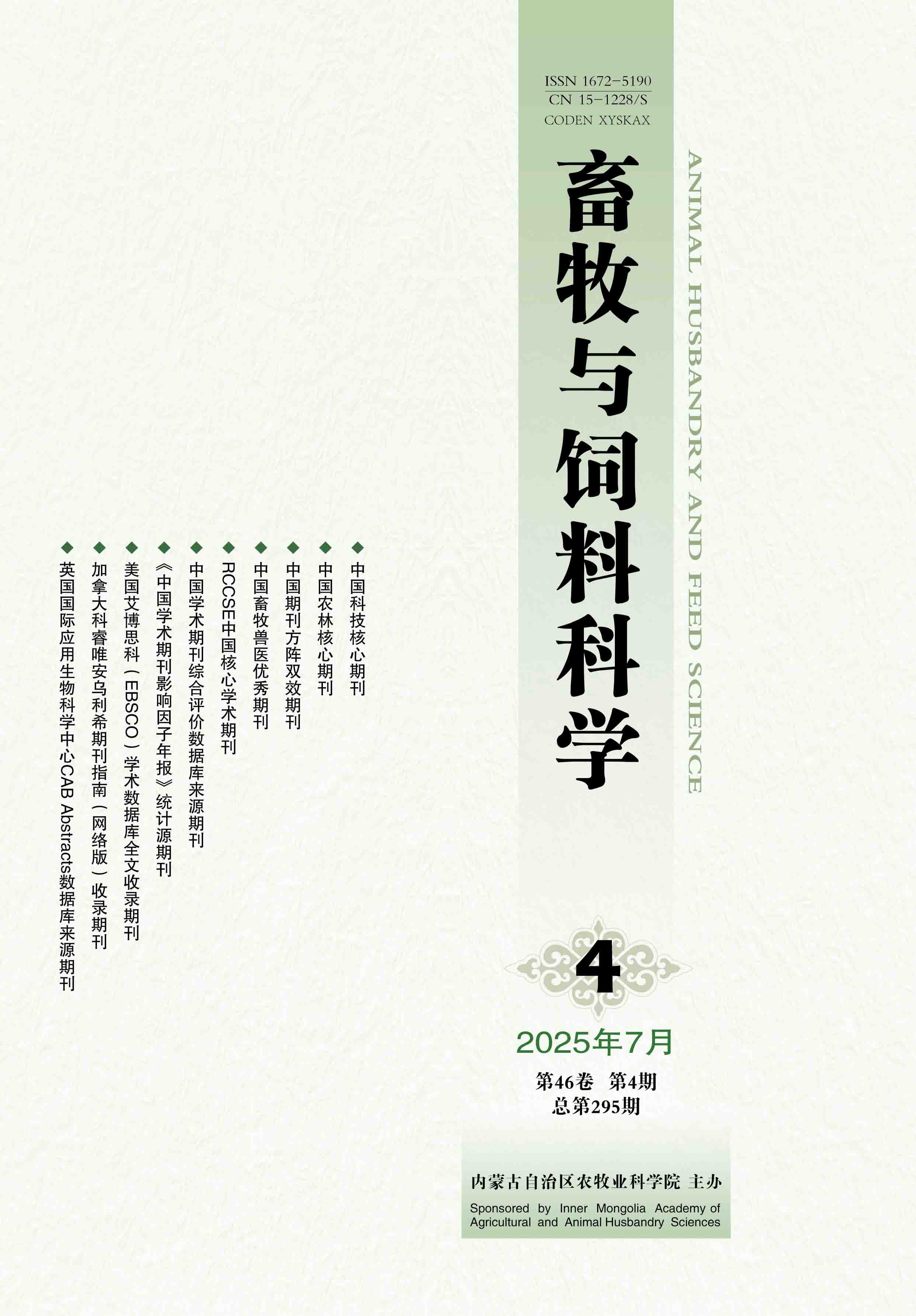Select
Evaluation of Production Performance of Three New Cultivars of Alfalfa (Medicago sativa L.)in Xinjiang Uygur Autonomous Region
DUISHANKAILEDE Rehemujiang, ZHU Wenyu, DONG Jiale, WANG Yuxiang
2024, 45(4):
78-84.
doi:10.12160/j.issn.1672-5190.2024.04.010
Abstract
(
180 )
PDF (1372KB)
(
55
)
Save
References |
Related Articles |
Metrics
[Objective] This study was conducted to evaluate the production performance of three new cultivars of alfalfa (Medicago sativa L.) in Xinjiang Uygur Autonomous Region. [Method] The three new cultivars of alfalfa bred by Grass Germplasm Resources and Breeding Team in Xinjiang Agricultural University, designated as MX01, MX02 and MX03, were used as the research objects, and Xinmu No.4, an indigenously bred alfalfa cultivar in Xinjiang Uygur Autonomous Region was served as control (CK). The plant height, dry to fresh ratio, leaf to stem ratio, fresh yield per harvest, total fresh yield, hay yield per harvest and total hay yield of the four tested alfalfa materials in three consecutive harvests within the same year were assessed and statistically compared. In addition, correlation analyses were performed between the associated trait indicators and total fresh yield or total hay yield. [Result] The average plant height of the four tested alfalfa materials in the three observed harvests from high to low were MX01 (95.23 cm), CK (94.56 cm), MX03 (90.25 cm) and MX02 (88.36 cm), indicating that MX01 had a better performance in growth. The average dry to fresh ratio from high to low were MX02 (32.22%), CK (28.81%), MX01 (27.76%) and MX03 (25.36%), revealing that MX02 had a better performance in dry matter accumulation. The average leaf to stem ratio from high to low were MX03 (70.85%), MX02 (67.53%), CK (66.68%) and MX01 (62.76%), demonstrating that MX03 had a better performance in quality. The contribution rate of the fresh yield in the first two harvests to the total fresh yield of MX02 and MX03 was relatively higher, both reaching over 80%. The total fresh yield of the four tested alfalfa materials from high to low were MX03 (89.01 t/hm2 ), MX02 (86.33 t/hm2 ), CK (83.53 t/hm2 ) and MX01 (76.62 t/hm2 ), with MX03 significantly (P <0.05) higher than the other materials, indicating that it was suitable for fresh grass production. There were evident differences in the contribution rate of the hay yield in the three separate harvest to the total hay yield among the three new cultivars. The total hay yield from high to low were MX02 (27.82 t/hm2 ), CK (24.06 t/hm2 ), MX03 (22.57 t/hm2 ) and MX01 (21.27 t/hm2 ), demonstrating that MX02 was suitable for hay production. The fresh yield in the second harvest was extremely significantly (P <0.01) positively correlated with the total fresh yield, while the leaf to stem ratio in the second harvest was extremely significantly (P <0.01) negatively correlated with the total hay yield. [Conclusion] The evaluation results of multiple trait indicators of the three new cultivars of alfalfa in different harvests and the entire production cycle demonstrated that the comprehensive performance of MX02 and MX03 was better, and they had the potential to be promoted and planted in Xinjiang Uygur Autonomous Region.








